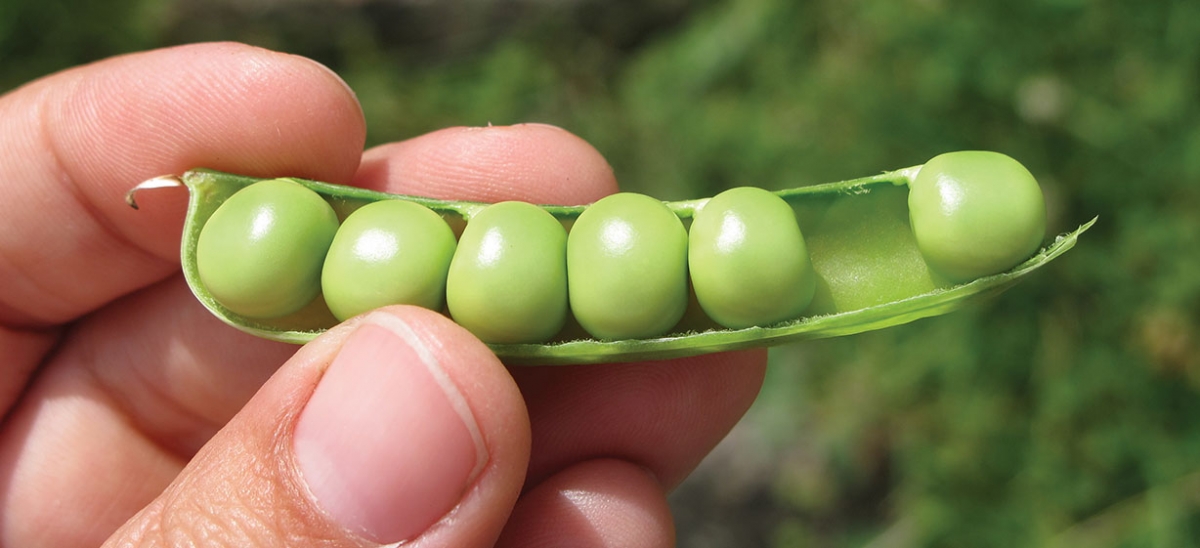
Pittsburgh turns green in more ways than one come mid-March. Budding trees line the roads and crocuses pop up in sidewalk gardens. Along East Carson Street, the South Side’s main drag, drunken revelers laugh and shout, adjust their shamrock hats and “Kiss Me I’m Irish” T-shirts as they search out one more green beer.
Up above this revelry, on the South Side’s slopes, I crawl around in the garden, poking holes into the frozen ground. I place a pea into each indentation, cover it up with some chilly soil, and think Happy St. Patrick’s Day.
A little like a fairy tale, this moment of shoving dried-up muddy-green peas into naked ground—trees still barren of leaves, a stocking cap on my head, my fingers numb—makes me hope for the best, even while knowing I look a little ridiculous.
Each year, it seems impossible that spring will come, that the garden will rise into its full chaotic swing of harvest cycles again. This first step has become my annual tradition. I plant the peas (and other early crops like Swiss chard, kale, lettuce, and radishes) on St. Patrick’s Day.
The seed catalogs arrived back in January and February. Flopped into my mailbox, their colorful, alluring pages revealed a crazy offering of vegetables and fruits with the powerfully tempting “New this year!” angled across some select photos. I flipped through the catalogs as I sat in front of my wood-burning stove, snow floating down outside the kitchen window. Throughout the winter, I earmarked pages, circled new ideas. I calculated how much space I have, how I could get just a bit more by digging up another patch of lawn. Then I placed my order. That’s how gardeners pace themselves through the idle months. After clearing out the garden, composting the dead plants and fallen leaves, and tidying up all the patches for next spring, it’s just about waiting. Thinking. Imagining. Soon the garden became a series of sketches and notes, a tall pile of seed packets waiting by the back door.
The pea shows gardening’s exponential math with such prim elegance. Each single dried, unexceptional pea shoved into the ground creates a vibrant green bush with smart little white blossoms, which turn to pods that dangle from the plant like gaudy earrings. Each fills up like a tiny bellows, housing a tight, long line of perky peas.
Come May, every bloom is a revelation, and the peas mark the harvest’s beginning.
I like to wander out into the backyard and pull a few plump pods free, slit them open by pulling the pod’s end like a zipper, and eat the peas surrounded by birdsong and that wonderful early spring light. Right from the plant, fresh peas are better than candy. It’s impossible to eat just one.
Each year this little vegetable helps me to shake off the dark, cold months that have come before. It’s as if the peas click on a gardening power switch, and from there on in it’s a go. Compost, plant, mulch, harvest, repeat. The garden soon explodes.
With the peas ripening, another ritual takes place. After hiding from the slush and falling into the trap of a winter hermit, it’s time to socialize. My friends and I celebrate with Pea Fest each spring. Leslie, Christina and I have been cooking and baking together for years now. I email an enthusiastic notice that the peas will be ready soon, we improvise a menu with brainstormed ingredients, and then we meet up to put it all together. Because peas begin to lose their sweetness the second you pick them, it’s important to eat them as quickly as possible. I feel, to understand the true taste of the pea, you must pick them and cook with them immediately, or have a friend who is willing to share.
I harvest as many peas as I can. It’s decadent, how many peas we have. We make pea tart and pea salads, pea soup and pea hummus. Bright green appears in bowls and on platters across the table as we sit down with a crisp white vino verde and some crusty bread to share what’s new and celebrate another great beginning to months of good local eating.

